China was ruled by emperors for over 2,000 years. The emperor was authoritative and greatly respected and his words were considered sacred and were obeyed with immediate effect. The Chinese believe that all emperors that shaped the history of China ruled under the ‘mandate of heaven’, which could be taken away when they did not serve as a strategic and influential leader. One of the most popular and greatly remembered Emperor’s in China was Qin Shi Huang. Read on to learn more about his life, achievements, and ruling style.
who was qin shi Huangdi?
Qin Shi Huang, who ruled between 221 BC and 210 BC, is regarded and greatly remembered as the first emperor of China and the founder of the authoritarian Qin Dynasty. According to most historical records and other Chinese literary works, Qin Shi Huang was the first ruler who united China under one rule in 221 BC, and he began multiple economic, cultural, and political reforms throughout China. These reforms greatly influenced China’s history and governance methods. Along with that, he built up the Great Wall of China, which is considered one of the largest building-construction projects that have ever been undertaken worldwide. He was buried with the fascinating Terracotta Army, which is currently a wonder of the world.
When was the first emperor of China? (Early Years and Rule)
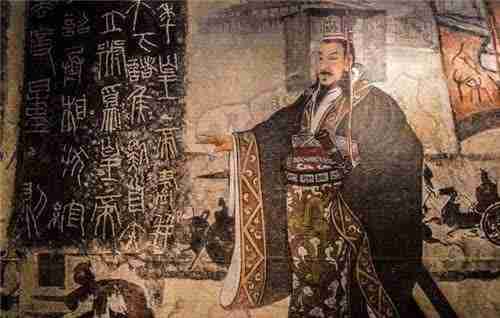
Qin Shi Huang, born Zhao Zheng was born when his father (Zhuangxiang) was held hostage in the state of Zhao. His mother was a concubine of Lu Buwei ( a rich merchant at the time), when Zhuangxiang fell in love with her. When Lu Buwei found out that her concubine had a son with another man, he consented for her to be Zhuangxiang’s wife. She then became Lady Zhao and her husband ascended the throne based on financial and political strategy, as he wasn’t the intended successor. While most scholars are convinced that Qin Shi Huang was an illegitimate child, that wasn’t really the case.
He was given the name Zhao Zheng, which came from his month of birth- Zhengyue (the 1st month of the Chinese Lunar Calendar. In 246 BCE, when he was about 13 years old, he formally ascended the throne (as King Zheng) and Qin was considered the most powerful state at the time. The central states were convinced that Qin was a very brutal country with a strong position on the mountainous western periphery. Because of Qin’s competitive advantage, Emperor Qin was able to develop a powerful military organization and a strong bureaucratic government, guided by the philosophy of Legalism.
Until he was officially declared of age in 238 BC, his government was headed by Lu Buwei (the rich merchant). When Qin Shi Huang became king/emperor, the first thing he did was to execute his mother’s lover who had joined the opposition, and exile Lu Buwei, who often used his relationship with his mother as a basis for manipulation. By 221 BC, with the help of ruthless leadership of gifted generals, espionage, and excessive bribery, Zheng (Qin Shi Huang) was able to eliminate all 6 remaining rival states that constituted China at the time. The year 221 marked his final triumph and for the first time ever he was able to unite China under the supreme rule of the Qin. All in all, he ruled from 246 to 210 BC, and in his 35-year reign, he caused both intellectual and cultural advancement in China. At the same time, his reign was characterized by massive destruction and oppression within China.
Qin Shi Huangdi Achievements/ Why was Qin Shi Huang Important?
Qin Shi Huang is considered a very important emperor in China as he created the first unified, multi-national, ad powerful state in Chinese History. Although the state survived for only fifteen years, the Qin dynasty played a very important role in Chinese history and it greatly influenced the following dynasty. Some of Qin Shi Huangdi’s achievements were:
Unification of China/ how he unified China
In 230 BC, Emperor Qin Shi Huang unleashed the last campaigns of the Warring States Period, as he set out to conquer all the remaining independent kingdoms, one at a time. The first state to fall was Hann in 230BC. In 229 BC, Qin took advantage of natural disasters to conquer Zhao where he had been born. When he was there, he sought to avenge his poor treatment as a child hostage and ruthlessly killed all his enemies. He eventually conquered the state of Zhao in 228 BC, followed by the country of Yan in 226 BC, and the small state of Wei in 225 BC. In 223 BC, he was able to conquer his greatest challenge, the state of Chu, and then captured the last remnants of Yan and the royal family in Liaodong in 222 BC.
At this point, the only independent country that was left was the state of Qi, which is currently known as the Shandong Peninsula. The young king of Qi was terrified by Qin Shi Huang (he was King Zheng at the time) and sent a large army to defend his western borders. Unfortunately, the Qin armies were much stronger and they annexed Qi. Generally, Emperor Qin used the standardization of trade and communication, currency, and language, to successfully unify China.
For the first time under his rule, all Chinese counties, lands, and regions, were united under one authoritarian ruler. In the same year, he declared himself the ‘First Emperor’ of the land of China, and he was no longer King Zheng. Prime Minister Li Si, carved onto the Imperial Seal that Emperor Qin had ordered, and wrote ‘Having received his Mandate from Heaven, May the emperor lead a long and prosperous life.
Building the Great Wall of China
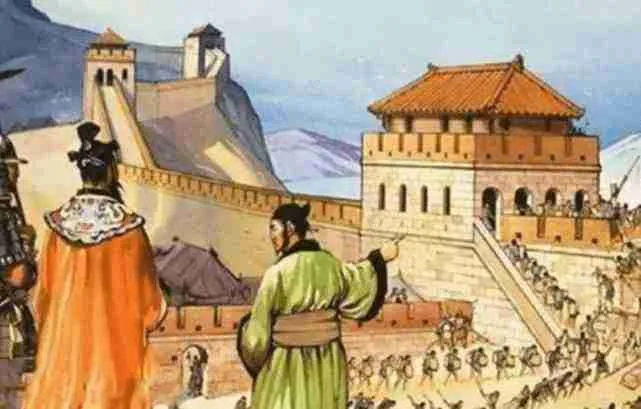
Generally, the Qin fought multiple nomadic tribes towards the North and North-West of China. Even so, the Xiongnu tribes were still standing strong and the military campaigns became tiresome, costly, and unsuccessful in the long run. For this reason, Emperor Qin Shi Huang demanded the construction of an immense defensive wall, which is now the Great Wall of China. The whole idea was that the wall needed to be massive enough to prevent the Xiongnu from invading the northern frontier any longer.
Hundreds of men were mobilized to construct the wall, and several died in the process. Reportedly, the wall connected several state walls which had been built before. In order to seamlessly impose centralized rule and prevent the resurgence of any feudal lords in China, he went ahead and ordered the destruction of all the wall sections that divided his empire among the former states. The wall wasn’t supposed to be a permanently fixed border; it needed to be built continuously to connect all the remaining fortifications along the empire’s northern frontier.
Rammed earth was used for construction in the plains, and stones from the mountains were used over mountain ranges. Unfortunately, there isn’t any documentation about the exact length and course of the Qin walls. Also, all the ancient walls seem to have eroded over the years, and very few sections are seen today. While the exact figure is unknown, several men died during the construction of the Great Wall. Currently, the wall is a popular tourist attraction site in China.
The Standardization and Servitude in China
Emperor Qin Shi Huang of the Qin Dynasty standardized writing, and this was considered a critical factor in overcoming cultural barriers that existed between the different provinces in ancient China. Along with that, he standardized systems of currency, measures, and weights. Also, he conducted a census of his people, built great highways for his people to use, and managed to establish elaborate postal and irrigation systems in the empire. All these unified the empire and created a more cohesive society.
Legalist policies
Qin Shi Huangdi implemented strict legalist policies, which included harsh punishments for those who broke the law. He also abolished feudalism, which helped centralize power under his rule.
Terra Cotta Army
Qin Shi Huangdi is credited with commissioning the famous Terracotta Army, an incredible collection of life-size clay sculptures of soldiers and horses, which were buried with him to protect him in the afterlife.
Construction of infrastructure
Qin Shi Huangdi constructed roads, canals, and irrigation systems to improve communication, transportation, and agricultural production in China.
qin shi huang Elixir of life
The first Chinese emperor, Qin Shi Huang, was fixated on discovering the fabled elixir of life. He believed that by practising alchemy and consuming various elixirs and potions, he could live forever.
In order to find the legendary islands where the elixir was said to grow, he dispatched expeditions. He also invited magicians and alchemists to serve in his court, where they toiled away for years trying to crack the secret of the elixir.
Unfortunately, Qin Shi Huang was not successful in attaining immortality despite their best efforts. Some of the elixirs and potions he consumed may have even hastened his death, as they were frequently formulated with poisons like mercury and lead.
After making what would have been his fifth trip to the eastern part of his empire in search of the elixir, he supposedly died there. He went to Zhifu, a port city on the coast, in the hopes of discovering the elixir on one of the nearby islands. But he got sick and died before he could start his investigation.
Qin Shi Huang failed to locate the elixir, but he did leave an enduring legacy in China. He is remembered for constructing the Great Wall of China, standardising the language and currency, and uniting the country. However, the perils of trying to achieve the impossible are on full display in his obsession with immortality.
qin shi Huang built Lingqu Canal
As the first Chinese Emperor, Qin Shi Huang was instrumental in the Qin Dynasty’s building and expansion of the Lingqu Canal. During the Qin Dynasty, the canal was enlarged and renovated from its original construction during the Warring States period.
Strategically and economically, Qin Shi Huang valued the canal that linked the Xiang River in Hunan Province to the Li River in Guangxi Province. To improve the canal’s usability for shipping, he had it enlarged and deepened, and he had a series of locks built to control the water level.
The Lingqu Canal, built by Qin Shi Huang, connected the Yangtze River basin with the Pearl River delta, making it a vital trade and travel corridor. To add to its significance in the economic growth of southern China, the canal also aided in the dissemination of ideas and cultural practises across China.
As one of the most significant waterways in Chinese history, the Lingqu Canal’s construction was a feat of remarkable engineering. It took advantage of the topography and hydrology of the area, and was constructed using a combination of manual labour and natural water sources. Locks constructed along the canal using the innovative “pound lock” method allowed watercraft to be raised and lowered between levels, streamlining the process of travelling between them.
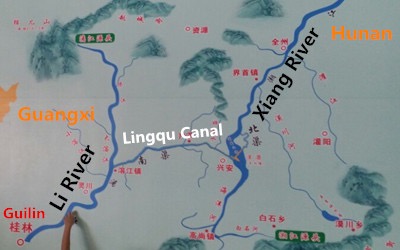
Qin shi Huang attacked Xiongnu
Qin Shi Huang, China’s first emperor, waged several wars against the Xiongnu and other neighbouring states and tribes during his reign. The Xiongnu were a nomadic group from northern China and Mongolia who posed a serious threat to the Qin dynasty’s rule and prosperity.
Qin Shi Huang led a massive military campaign against the Xiongnu in 215 BCE, which resulted in the Xiongnu army’s defeat and their leader’s capture. To prevent further incursions from the Xiongnu and other neighbouring tribes, the emperor used this victory to set up a string of military garrisons and outposts along the Qin empire’s northern border.
Qin Shi Huang launched numerous military campaigns against the Xiongnu throughout his reign because they remained a serious threat. The Great Wall of China was built after another campaign led by the emperor against the Xiongnu in 211 BCE. The wall was constructed to prevent further Xiongnu invasions into Qin territory.
Qin’s campaign against the Baiyue
The Qin dynasty launched a series of military campaigns against the Baiyue tribes in southern China during the reign of Qin Shi Huang, China’s first emperor. Historically, the Baiyue people lived along the coasts of the provinces of Guangdong, Guangxi, and Hainan.
In 214 BCE, the emperor of Qin sent the general Zhao Tuo on a military expedition to the southern regions of China to put down the Baiyue rebellion. After defeating the Baiyue tribes, Zhao Tuo was able to establish a Qin garrison in what is now modern-day Guangdong.
However, the Qin army did not face no opposition during their campaign against the Baiyue. The Baiyue tribes put up a ferocious fight against the Qin army, thanks to their expertise in guerrilla tactics and intimate familiarity with the area. Challenges in logistics and supply were also experienced by the Qin dynasty in the southern regions of China, which were characterised by thick forests, rugged mountains, and a hot and humid climate.
In spite of these obstacles, the Qin dynasty was able to establish a foothold in the southern regions of China through a combination of military might, diplomatic manoeuvring, and administrative reforms. Roads and infrastructure were built, Qin law and language were introduced, and administrative centres were set up as part of the emperor’s plan to fully incorporate the Baiyue people into the Qin empire.
An important turning point in Chinese history, the Qin campaign against the Baiyue paved the way for the conquest and incorporation of the southern regions of the country. For centuries to come, China’s territorial integrity and unity would be a defining feature of Chinese culture, and this event played a role in securing that.
Jing Ke’s assassination attempt on Qin Shi Huang
The attempt at Qin Shi Huang’s life by Jing Ke, who lived during the Warring States era, is a well-known part of Chinese history (475-221 BCE). Qin Shi Huang, the first emperor of China, was expanding his empire through military conquest when the state of Yan hired the renowned assassin Jing Ke to kill him.
Jing Ke, who went to the Qin court with presents for the emperor, is mentioned in history. Jing Ke hid a dagger in a scroll, and their true intent was to use it to murder Qin Shi Huang.
Jing Ke unrolled the scroll and displayed the dagger before the court. After being taken aback, Qin Shi Huang quickly composed himself and attempted self-defense with a bronze weapon. As a result of the ensuing struggle, Jing Ke was killed by Qin Shi Huang’s guards after failing to deal the emperor a killing blow.
The failed assassination attempt by Jing Ke nonetheless left an indelible mark on Chinese culture and history. After the incident, Qin Shi Huang’s paranoia and repression grew, and he became a more authoritarian and ruthless ruler. Meanwhile, Jing Ke became well-known figures in Chinese literature and folklore; the story of their doomed mission has been retold and reinterpreted in countless creative works across multiple mediums and centuries.
In conclusion, the attempt on Qin Shi Huang’s life by Jing Ke was a watershed moment in Chinese history, serving to both highlight the political tensions and conflicts of the Warring States period and add to the lasting legacy of Qin Shi Huang’s reign. The attempt may have been doomed from the start, but it has left an indelible mark on Chinese culture and is still told as a revered folktale today.
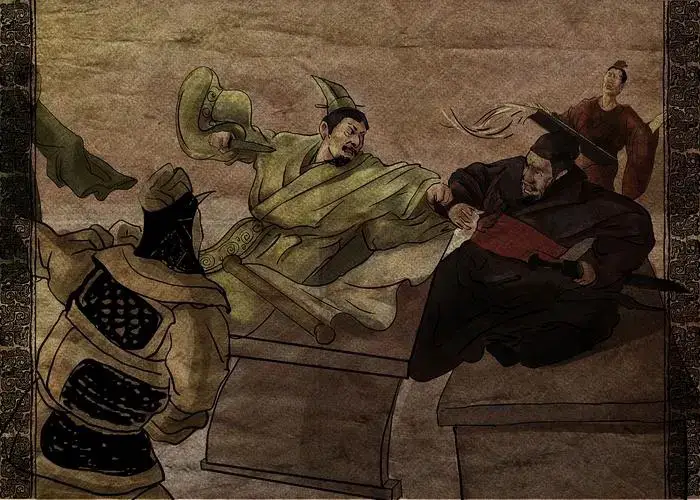
Why did Qin Shi Huang burn books?
Qin Shi Huang burnt books to consolidate his rule. During his reign as emperor, Legalism was the central philosophy and he was greatly against Confucianism and any other philosophy that contradicted his. To ensure that all his subjects adamantly subscribed to his philosophy of Legalism, he could not allow any other forms of philosophy or ideas to exist within his territorial boundary. The best way, at that particular time, to successfully stop the spread of history, philosophical ideas, and other confusing trains of thought contrary to his ruling style, was to burn books that were not about Legalism or other practical subjects. Also, he was convinced that killing all scholars who were in any other non-legalist subjects would also prevent the spread of other philosophical ideas that could tamper with his rule as emperor and divide people. In that regard, he buried over 400 Confucian scholars alive and ensured that all their philosophical texts were burned. He also burned nearly all historical texts that were not about the Qin state. This marked the end of the Hundred Schools of Thought and the philosophy of Mohism was one of the ideas that were completely wiped out.
When/How did Qin Shi Huang die?
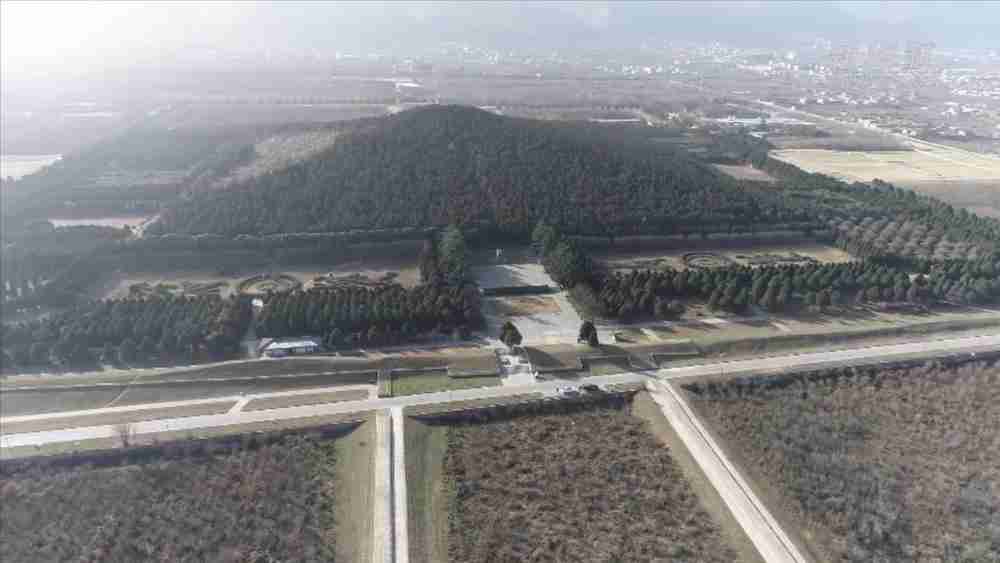
According to most Chinese historical records and other literary works, a large meteor is said to have fallen in the lower reaches of the Yellow River in 211 BC. Supposedly, the words ‘The First Emperor of the land will die and his land will be divided immediately after’ were inscribed on the meteor. When Qin Shi Huang heard of the message, he sent one of the imperial secretaries to carry out an investigation into the absurd prophecy. Unfortunately, no one confessed the deed, so the emperor declared that everyone who lived near the Yellow River was to be put to death. The stone was then crushed into small pieces and ignored.
When he was on his fifth tour of Eastern China, Emperor Qin Shi Huang became seriously ill immediately when he arrived in Pingyuajin, which is currently Pingyuan County in Shandong. Sadly, he died in 210 BC at the palace located in Shaqiu Prefecture, which was about two months away by road from the state capital of Xianyang.
To date, the cause of Emperor Qin Shi Huang is unknown. Some people claim that he may have been sick from the stress of running the demanding Qin Empire, while others claim that he died from a Chinese alchemical elixir, which was greatly associated with the fact that he ingested mercury pills made by court physicians and his alchemists to quench his thirst for immortality.
qin shi huang death
In 210 BCE, at the age of 49, Qin Shi Huang passed away while visiting the eastern part of his empire. Natural causes, possibly a stroke or heart attack, are cited in historical accounts as the reasons for his passing, though the precise cause of death remains unknown.
The future of China was profoundly affected by Qin Shi Huang’s untimely demise. In the wake of his death, the Qin Dynasty descended into a period of instability and unrest as competing groups fought for control of the empire. It was with his passing that the 15-year reign of the Qin Dynasty came to an end.
qin shi huang Succession
In October of 210 BC, the aging Emperor Qin Shi Huang fell ill during his fifth tour of inspection. He called for Zhao Gao, who managed the imperial seal and issued orders on behalf of the emperor, and instructed him to draft a decree for his eldest son Fusu, commanding him to entrust military affairs to General Meng Tian and return to Xianyang to attend to funeral arrangements. This essentially confirmed Fusu’s status as the successor to the throne.
After the decree was sealed, Qin Shi Huang ordered Zhao Gao to send messengers quickly to deliver it. However, Zhao Gao secretly withheld the decree because he and Fusu had a longstanding feud and he feared Fusu would seek revenge against him if he became emperor. Instead, he preferred the younger and more easily manipulated Hu Hai to succeed to the throne.
Not long after, Qin Shi Huang died on the Sand Dune Platform. Prime Minister Li Si, worried that news of the emperor’s death would cause chaos throughout the empire during the two months it would take for the imperial procession to return to Xianyang, decided to keep the news secret. The coffin was placed inside a cart called the “dragon carriage,” and the procession continued as if nothing had happened. Only Hu Hai, Zhao Gao, and five or six favored eunuchs knew that the emperor had died. To mask the smell of the decomposing body, they placed rotten fish in the cart. The death of the emperor was only announced after they reached Xianyang.
Later, Zhao Gao convinced Li Si to forge a decree from Qin Shi Huang ordering Fusu and General Meng to commit suicide for their supposed disloyalty and disobedience. Fusu obeyed the order and took his own life, clearing the way for Hu Hai to ascend to the throne as Qin Er Shi, or “Second Generation Qin.”
Where was Qin Shi Huang buried?
One of the most fascinating creations of Emperor Qin Shi Huang was the preparation he made for his own funeral/death. He had a massive tomb constructed for him on Mount Li, which is near the current Xi’an City, located in Shaanxi province in China, and he was buried there after his unexpected death. His tomb was filled with hundreds of thousands of life-sized terracotta soldiers, who were intended to guard him in his afterlife. Each soldier had real weapons and they remain a wonder in the world today.
The first Chinese Emperor, Qin Shi Huang, was laid to rest in the Lintong District of Xi’an, Shaanxi Province, China. Famous for housing the Terracotta Army, a collection of life-size clay sculptures of soldiers and horses buried with the emperor to protect him in the afterlife, the mausoleum is one of the most important archaeological sites in the world.
It took more than 38 years to complete the mausoleum complex that was started shortly after Qin Shi Huang became emperor in 221 BCE. It is estimated that more than 700,000 people worked on the mausoleum complex, which spans more than 56 square kilometres. The main burial chamber, in which the emperor’s body was interred, was designed to look like the emperor’s palace in life.
The mausoleum complex was built with the forced labour of many people. Digging tunnels and chambers, constructing underground palaces, and erecting the enormous burial mound likely resulted in the deaths of hundreds of thousands of labourers and craftsmen.
The most well-known part of the mausoleum complex, the Terracotta Army, wasn’t unearthed until 1974, nearly 2,000 years after it had been buried. Around the emperor’s tomb are arrayed over 8,000 life-size clay sculptures of soldiers, horses, and chariots ready for battle. The sculptures were made by skilled artisans who were supervised by the emperor’s court officials, and they are incredibly detailed.
The discovery of the mausoleum complex and the accompanying Terracotta Army has shed new light on ancient Chinese history and culture. The site has been designated as a UNESCO World Heritage Site, so visitors can go there and see the incredible Terracotta Army for themselves. However, due to the need for cutting-edge technology to preserve and excavate its artefacts, a large portion of the mausoleum has not yet been uncovered.
Why did Qin Shi Huang build the Terracotta Army?
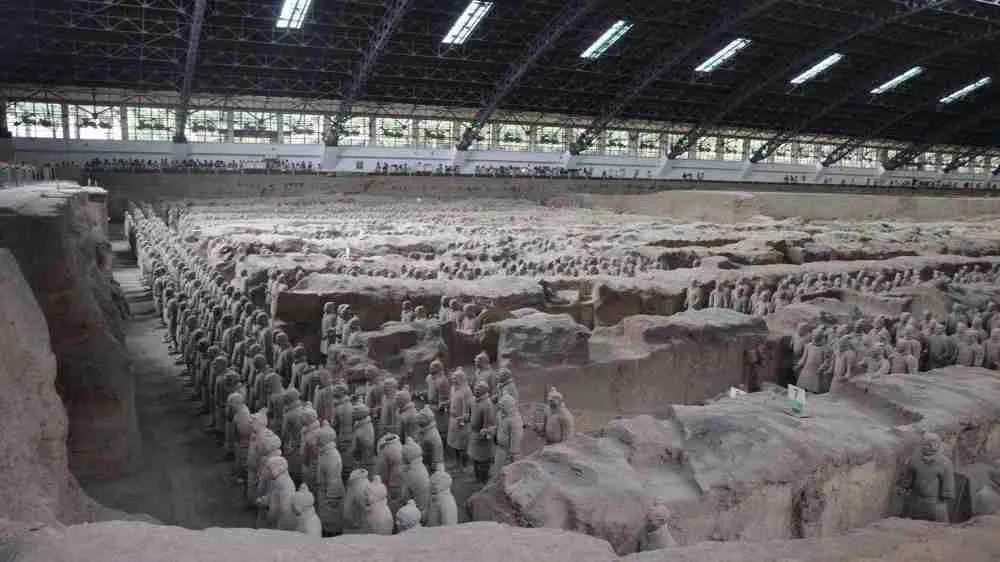
Generally, the Terracotta army is a wide collection of several carved figures that represent the military troops of Qin Shi Huang, and it is described as funerary artwork buried with the first emperor of China. There are three particular reasons why Qin Shi Huang built the Terracotta Army. First, was because he wanted the army to protect Qin Shi Huang and his tomb. During his reign, he killed many of his rivals and had several enemies, but was still powerful. Even so, he felt that he needed a great sense of protection from his soldiers in the afterlife, where he would meet his enemies. Following advice from his colleagues and friends, he chose to build the pottery warriors that would protect him in his afterlife.
Second, Qin Shi Huang built the Terracotta Army to show his glory within his territorial boundaries (China) and in the world at large. Without a doubt, Emperor Qin had a great sense of pride and he believed that he was the greatest emperor of all time. Because he wanted to be venerated for life, he decided to construct the Terracotta army, which is indeed a wonder in the world and exudes glory.
Lastly, he built the Terracotta army so that they would help him rule the underworld in the afterlife. The emperor was obsessed with power and he believed that by building an army, he would prolong his reign over China and become the king of the underworld, upon his death. It was more or less the quest for immortality that made him build the Terracotta Army warriors.
qin shi huang vs alexander the great
The two most well-known and influential leaders in antiquity were Qin Shi Huang and Alexander the Great. Although they were born and raised in different eras and parts of the world, they shared an enduring legacy because of the contributions they made to their respective empires.
In 221 BCE, Qin Shi Huang became China’s first emperor and established the Qin dynasty, which lasted until 206 BCE. He is most well-known for his unification of China, which involved the conquest of the warring states that had been in conflict for centuries. He also standardised weights, measures, and currency, and built the Great Wall of China. Qin Shi Huang is remembered for his repressive regime and the harsh treatment of his subjects under his strict legal framework.
In contrast, Alexander the Great ruled Macedon as king from 336 BCE to 323 BCE. During his reign, he expanded his empire to encompass large portions of Asia and Africa. His efforts to spread Hellenistic ideas and innovations, as well as Greek culture, are also legendary. His rule was notable for his military acumen and charisma as leader, but also for the brutality with which he dealt with opponents and silenced his opponents.
Despite their shared conquest successes, Qin Shi Huang and Alexander the Great took very different approaches to leadership. Qin Shi Huang was more concerned with establishing and maintaining order within his own empire, while Alexander the Great was more concerned with introducing Greek culture and ideas to the regions he conquered. Alexander the Great was a charismatic leader who inspired his troops and the people he conquered, while Qin Shi Huang was known for authoritarian rule and strict laws.
Both Qin Shi Huang and Alexander the Great left significant marks on the world long after their deaths. Alexander’s conquests brought new ideas and innovations to the regions he conquered and promoted the spread of Hellenistic culture, while Qin Shi Huang’s unification of China laid the foundation for the country’s political and cultural identity. However, both leaders left behind complicated and controversial legacies, with accusations of brutal tactics and harsh rule.
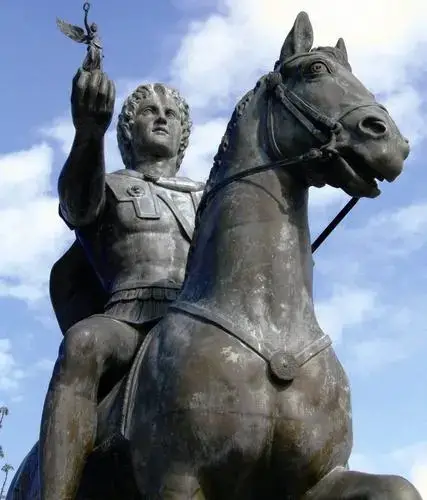
qin shi huang vs caesar
Leaders of the Qin and Roman empires, Qin Shi Huang and Julius Caesar were two of the most powerful figures in antiquity. Both leaders, despite coming from different eras and regions, left a lasting mark on their countries and the world.
Starting in 221 BCE, Qin Shi Huang established the Qin dynasty that ruled China until 206 BCE. Most notably, he unified China, built the Great Wall, and standardised Chinese weights, measures, and currency. But his rule was marked by authoritarianism and harsh laws that punished dissent. Julius Caesar, on the other hand, was a Roman general, statesman, and writer who was instrumental in the decline of the Roman Republic and the establishment of the Roman Empire. Military victories in Gaul and Britain, as well as reforms that reorganised Roman government and society, made him famous.
Their military prowess was one of the most striking parallels between Qin Shi Huang and Julius Caesar. Both of these tyrants were brilliant military strategists whose conquests resulted in vastly enlarged empires. While Qin Shi Huang’s victories over China’s warring states unified the country under his rule, Caesar’s expansion of the Roman Empire’s borders established his status as one of the most powerful leaders of antiquity.
On the other hand, they took very different approaches to leadership. In order to maintain order in his vast empire, Qin Shi Huang was an autocratic leader who centralised power and enacted stringent laws and regulations. Caesar, on the other hand, was a more populist leader who, through his reforms and policies, aimed to win the support of the people. In addition to his charismatic and charming personality, he was also well-known for his ability to rally the people behind him.
Similar to how both Qin Shi Huang and Julius Caesar left indelible marks on their empires and the world, their legacies continue to resonate long after their deaths. Both Qin Shi Huang’s unification of China and Caesar’s reforms and conquests helped to establish the Roman Empire as a preeminent power in antiquity; however, Qin Shi Huang’s efforts were more instrumental in establishing China’s political and cultural identity. While both leaders enjoyed widespread adulation during their lifetimes, their legacies have grown more nuanced and contentious as time has passed.
Qin Shihuang vs Genghis Khan
One of the most significant figures in Chinese history was Qin Shihuang, while Genghis Khan was a major figure in Mongolian history. Both leaders made significant contributions to their countries and the world, despite living in different eras and presiding over different empires.
In 221 BCE, Qin Shihuang became China’s first emperor and established the Qin dynasty, which lasted until 206 BCE. It was under his leadership that China was unified, the Great Wall was built, and Chinese weights, measures, and currency were standardised. However, authoritarianism and harsh laws that criminalised dissent were also hallmarks of his rule.
In contrast, Genghis Khan established the Mongol Empire and served as its first emperor from the early 13th to the mid-14th century, during which time the Mongols dominated much of Eurasia. His military successes against the Khwarezmian Empire and the Chinese Jin dynasty helped cement his reputation as a great conqueror. Moreover, he is lauded for having set up a method of administration and government that facilitated the rapid growth of his empire.
Strength on the battlefield was an area where Qin Shihuang and Genghis Khan were remarkably similar. Both rulers were brilliant military tacticians whose campaigns resulted in vast territorial gains for their empires. Genghis Khan expanded the borders of the Mongol Empire and cemented his position as one of the most powerful leaders in ancient history by conquering what had been warring states in China.
In contrast, their methods of leadership were vastly different. Qin Shihuang was a dictator who exercised absolute power over his empire and instituted repressive policies to maintain order. Genghis Khan, on the other hand, was well-known for his democratic style of leadership, which granted his subjects some autonomy in matters of religion and government.
It can be said that both Qin Shihuang and Genghis Khan left significant marks on the world and their empires long after they were gone. Both the unification of China by Qin Shihuang and the conquests of Genghis Khan contributed to the rise of the Mongol Empire as a global power in antiquity. However, both rulers came under fire for the harsh treatment they meted out to their people.
Qin Shihuang vs Napoleon
Qin Shihuang and Napoleon Bonaparte were two of the most significant leaders in world history, having played vital roles in the development and advancement of their respective empires. While they lived centuries apart, their impact on history is still felt to this day.
Qin Shihuang was the first emperor of China, having unified the country under his rule and established the Qin dynasty. He is known for his construction of the Great Wall of China, the standardization of Chinese writing and measurements, and his implementation of legalist policies that allowed him to maintain control over his vast empire. However, his reign was also marked by authoritarianism, and he was often ruthless towards those who opposed him.
Napoleon Bonaparte, on the other hand, was a military commander and emperor of France during the early 19th century. He is known for his military campaigns throughout Europe, his establishment of the Napoleonic Code, which served as a legal model for many countries, and his reforms of the French education system and infrastructure. However, his reign was also marked by war, and his ambition ultimately led to his downfall.
One of the primary similarities between Qin Shihuang and Napoleon was their military prowess. Both were successful conquerors who expanded their empires through military campaigns. Qin Shihuang’s conquests of the warring states of China led to the unification of the country under one ruler, while Napoleon’s conquests expanded the French Empire’s borders and solidified his position as one of the most powerful leaders in Europe.
However, there were also significant differences in their approaches to leadership. Qin Shihuang was an autocrat who centralized power within his empire and imposed strict laws and regulations to maintain order. In contrast, Napoleon was more of a populist leader who sought to gain the support of the people through his reforms and policies.
In terms of legacy, both Qin Shihuang and Napoleon left lasting impacts on their respective empires and the world. Qin Shihuang’s unification of China laid the foundation for the country’s political and cultural identity, while Napoleon’s military conquests and reforms changed the course of European history. However, both leaders were also criticized for their authoritarian tendencies and their disregard for human life.
Final Thoughts
Upon Emperor Qin Shi Huang’s death, China immediately plunged into civil war and the land was exacerbated by floods and drought. In 207 BC, Emperor Qin Shi Huang’s son and heir were killed, and the Qin Dynasty collapsed entirely. Even so, his innovations remain a wonder and the Qin Dynasty played a crucial role in the history of China.